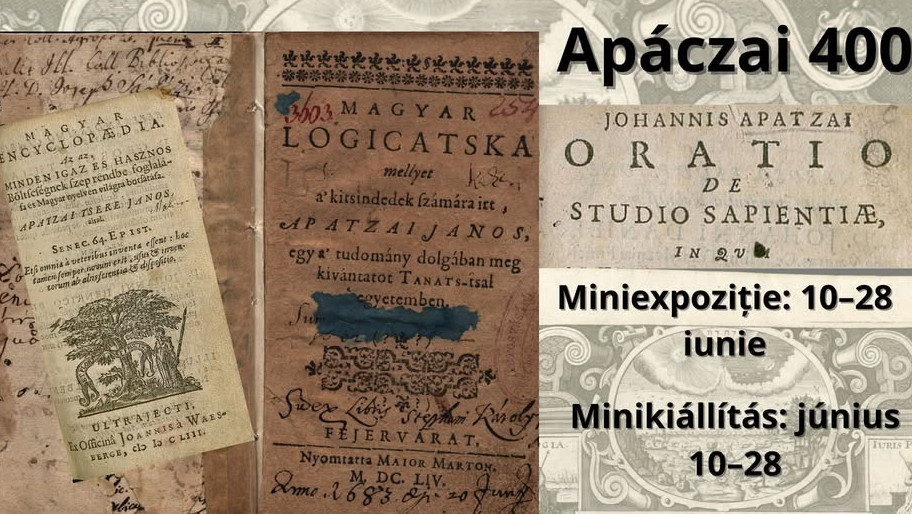Apáczai 400 - miniexhibition

Jun-10
Mini-Exhibition: Apáczai 400
“our only bundle, staff, and weapon is our mother tongue”
— Sándor Kányádi: Apáczai
Four hundred years ago, on June 10, 1625, the prominent rationalist philosopher, Puritan theologian, and educator of 17th-century Transylvania, János Apáczai Csere, was born. He studied with the best Transylvanian teachers of his time in Kolozsvár (Cluj-Napoca) and at the princely school in Gyulafehérvár (Alba Iulia), and later completed his university studies in the Netherlands.
He created the first Hungarian-language compendium of knowledge (Hungarian Encyclopedia) and emphasized the importance of mother-tongue education. His modern pedagogical vision was child-centered, and he advocated the introduction of natural sciences into education.
Among his works held at the Teleki-Bolyai Library are the Hungarian Encyclopedia published in Utrecht in 1655, and the Hungarian Logic published in Gyulafehérvár a year earlier. (The latter is the only known surviving copy of the first edition in the world.)
The mini-exhibition can be viewed from June 10–28 in the Great Hall of the Teleki Library.
“our only bundle, staff, and weapon is our mother tongue”
— Sándor Kányádi: Apáczai
Four hundred years ago, on June 10, 1625, the prominent rationalist philosopher, Puritan theologian, and educator of 17th-century Transylvania, János Apáczai Csere, was born. He studied with the best Transylvanian teachers of his time in Kolozsvár (Cluj-Napoca) and at the princely school in Gyulafehérvár (Alba Iulia), and later completed his university studies in the Netherlands.
He created the first Hungarian-language compendium of knowledge (Hungarian Encyclopedia) and emphasized the importance of mother-tongue education. His modern pedagogical vision was child-centered, and he advocated the introduction of natural sciences into education.
Among his works held at the Teleki-Bolyai Library are the Hungarian Encyclopedia published in Utrecht in 1655, and the Hungarian Logic published in Gyulafehérvár a year earlier. (The latter is the only known surviving copy of the first edition in the world.)
The mini-exhibition can be viewed from June 10–28 in the Great Hall of the Teleki Library.
